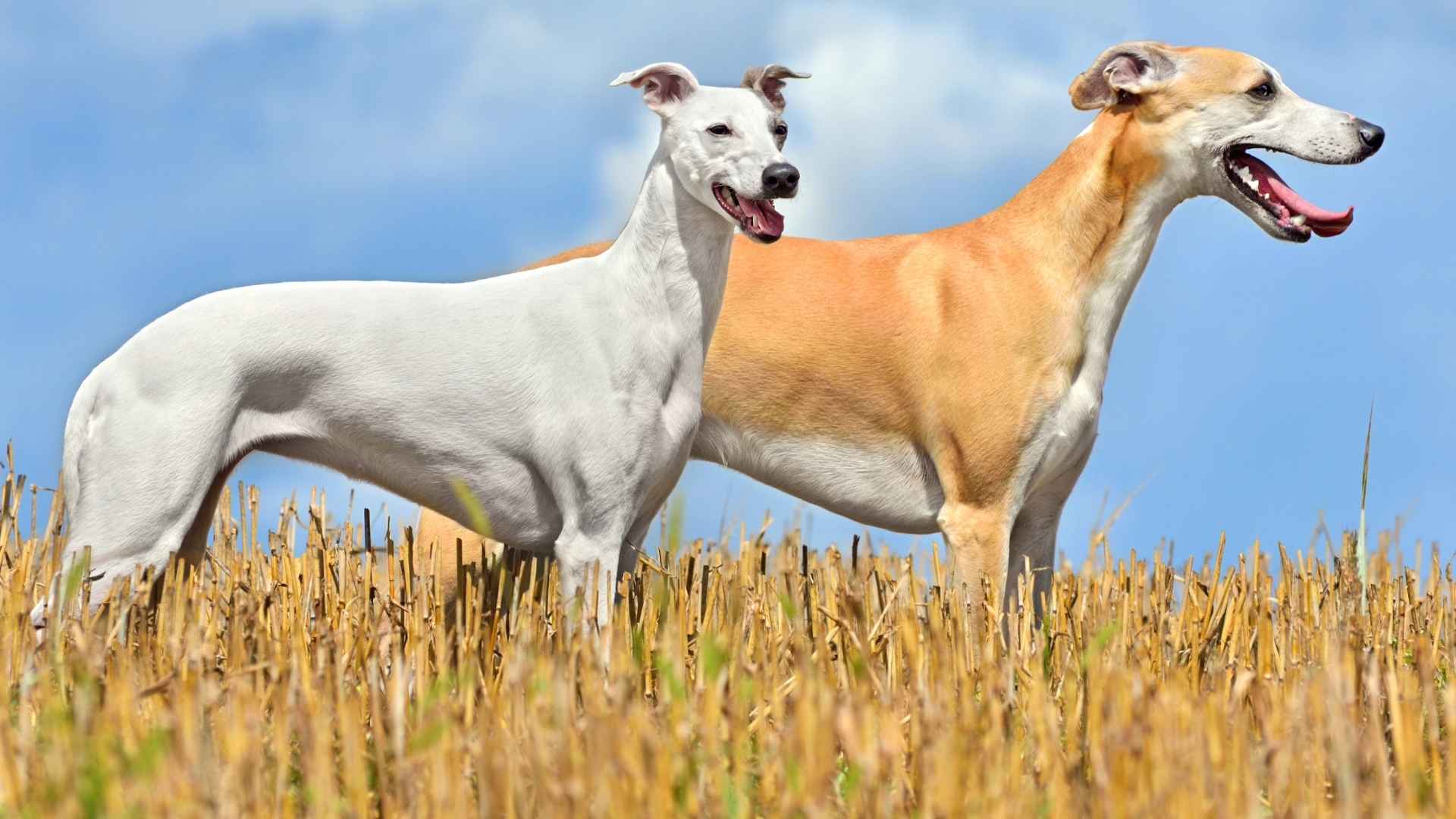Can a dog really be both obedient and heat-tolerant? It’s a question more people should ask, especially in warmer parts of the world.
Many popular breeds struggle the moment the temperature climbs. They lose interest in training, become sluggish, or worse—risk overheating. But other dogs seem almost built for it.
They keep their focus, adjust to the climate, and stay sharp under pressure. Choosing a dog for your lifestyle includes more than just energy levels or intelligence. It includes weather.
If you’ve ever wondered whether there are dogs that stay mentally engaged and physically comfortable in hot climates, you’re not alone. This article explores trainable dog breeds that also thrive when the temperature rises.
Trainable Dog Breeds For Hot Climates
1. Australian Cattle Dog
With origins in the tough Australian outback, this breed developed a natural tolerance for dry, sun-exposed terrain. Its double coat insulates against both heat and dirt without trapping moisture. Even during long hours outside, it maintains stamina and alertness in hot weather.
Highly Responsive to Commands
Australian Cattle Dogs are incredibly receptive to structured guidance, especially when introduced early. Their training success comes from a deep-rooted instinct to follow directions during herding tasks. This natural compliance is rarely seen in many other breeds with similar independence levels.
Exceptional Focus and Mental Stamina
Once locked into a task, this breed maintains concentration for extended periods — even during physically demanding sessions. Their mental drive often matches their physical endurance. This focus is why they consistently excel in various dog sports that require precision and agility.
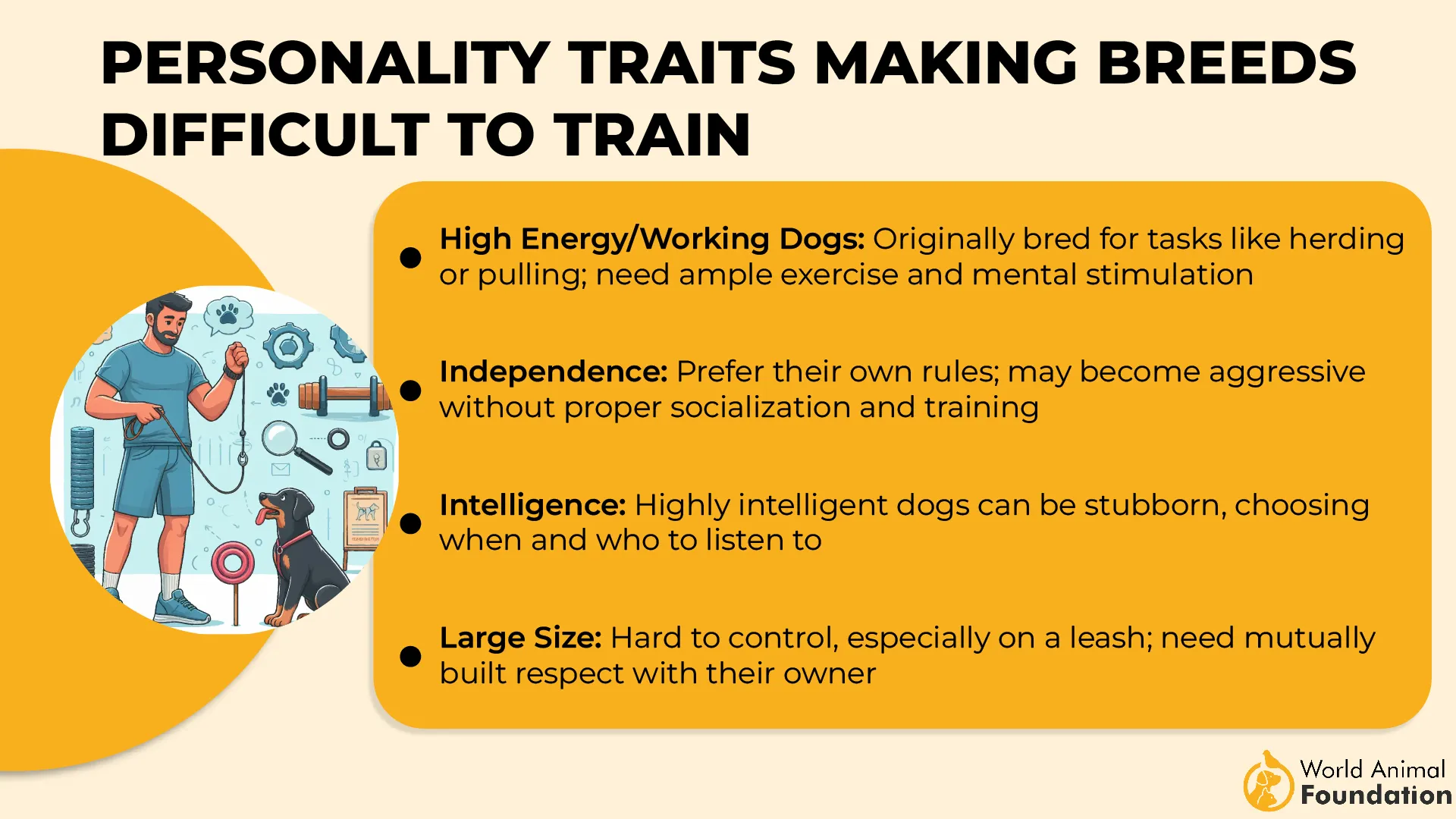
A Well-Known Fact From Its Lineage
They’re famously linked to the wild dingo — their distant relative — which contributes to their physical resilience and sharp instincts, as claimed by the Zealandia Pets. This heritage shaped a breed that doesn’t just survive but functions effectively across expansive, heat-exposed environments.
2. Chihuahua
The Chihuahua’s compact size, thin coat, and large ears support effective temperature regulation. These traits help it stay comfortable in warm weather climates where other small breeds may struggle. Smooth-coated varieties are especially well-adapted for hotter regions with minimal grooming needs.
Quick to Learn with the Right Approach
Chihuahuas respond well to clear, consistent training — especially when it’s paired with positive reinforcement. Their high alertness makes them fast to pick up on routines and household cues. The key is starting early, as they can become headstrong if not engaged from the start.
Clever with a Strong Memory
This breed has a surprisingly good memory and quickly connects cause and effect in everyday settings. They often excel in puzzle-solving games and trick training when offered regular mental stimulation. Without this, their boredom can turn into barking or attention-seeking habits.
Recognized for Their Record Lifespans
Chihuahuas are known for being among the longest-living dog breeds, with many reaching 16 years or more. One of the oldest recorded dogs in history, “Megabyte,” was a Chihuahua that lived to 20 years. This longevity is often tied to their minimal inherited health issues.
3. Ibizan Hound
The Ibizan Hound’s lean body and long legs create more surface area, which helps with cooling during activity. Their short, fine coat doesn’t retain heat or trap sweat, making them an ideal heat-tolerant dog. This lightweight structure supports stamina during outdoor activity in hot temperatures.
Quick Learner with Independent Thinking
They pick up basic commands quickly, especially when training is varied and interactive. While they’re not pushovers, they respond well to handlers who offer consistency without repetition. Their alert expressions often reflect their strong pattern recognition and situational awareness.
Energy-Driven and Motivated to Move
This breed stays highly motivated through sight-based play or chase-driven activities. Their hunting instincts remain sharp, which keeps them mentally alert and physically agile. These natural behaviors make them well-suited to open areas and warm, dry climates.
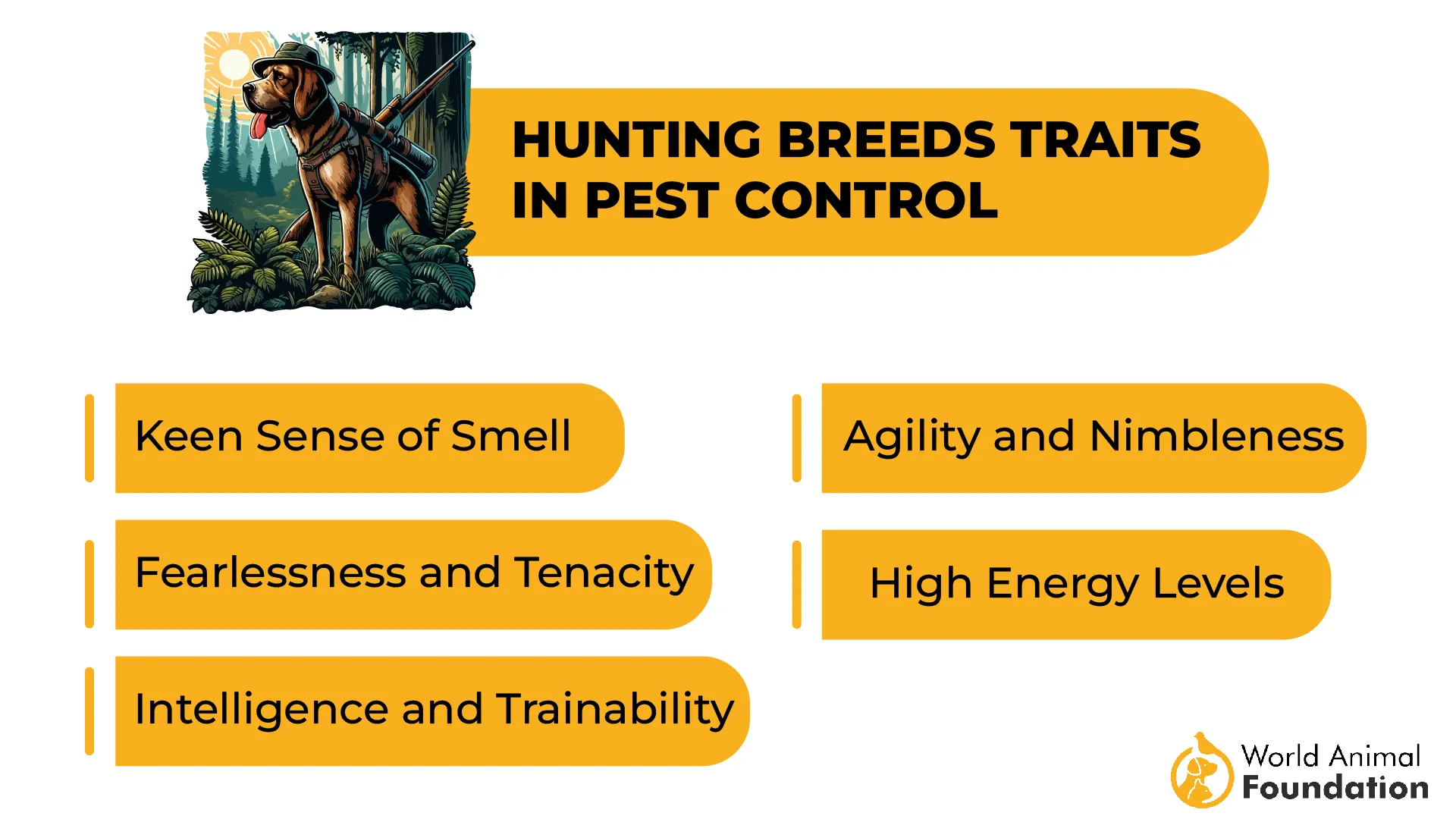
Known for Their Extraordinary Vertical Jump
Ibizan Hounds are capable of jumping five to six feet straight up from a standstill — a skill that has been consistently reported across multiple breed sources, as per the AKC. This powerful leap reflects a rare combination of muscle control and spatial awareness, even in confined settings.
4. Afghan Hound
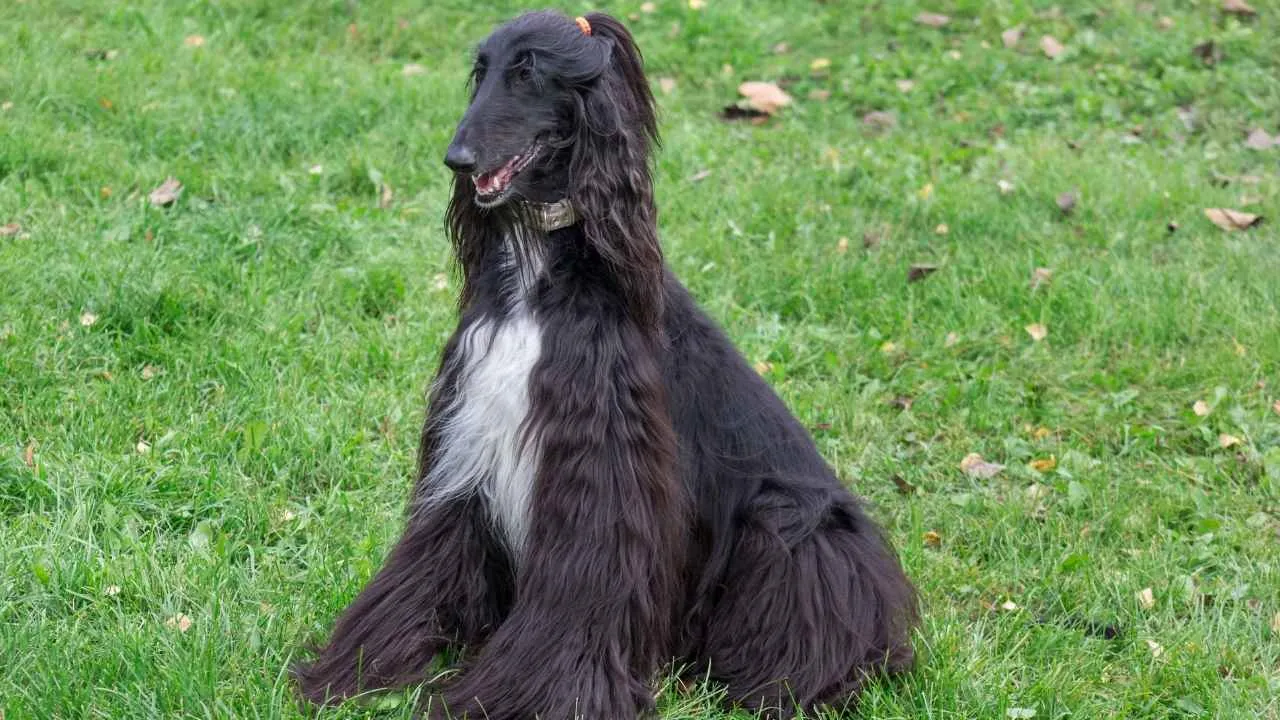
The Afghan Hound’s lean, elongated body helps release heat efficiently, making it well-adapted to warm climates. Its long, silky coat surprisingly insulates against heat when properly maintained. This unique coat texture prevents direct sun from reaching the skin while allowing air circulation.
Independent Learner with a Selective Focus
This breed is trainable but responds best to calm, consistent instruction over time. Repetition-based routines don’t engage it well; varied tasks that reward focused work better. When motivated properly, it retains commands and displays clear decision-making in open spaces.
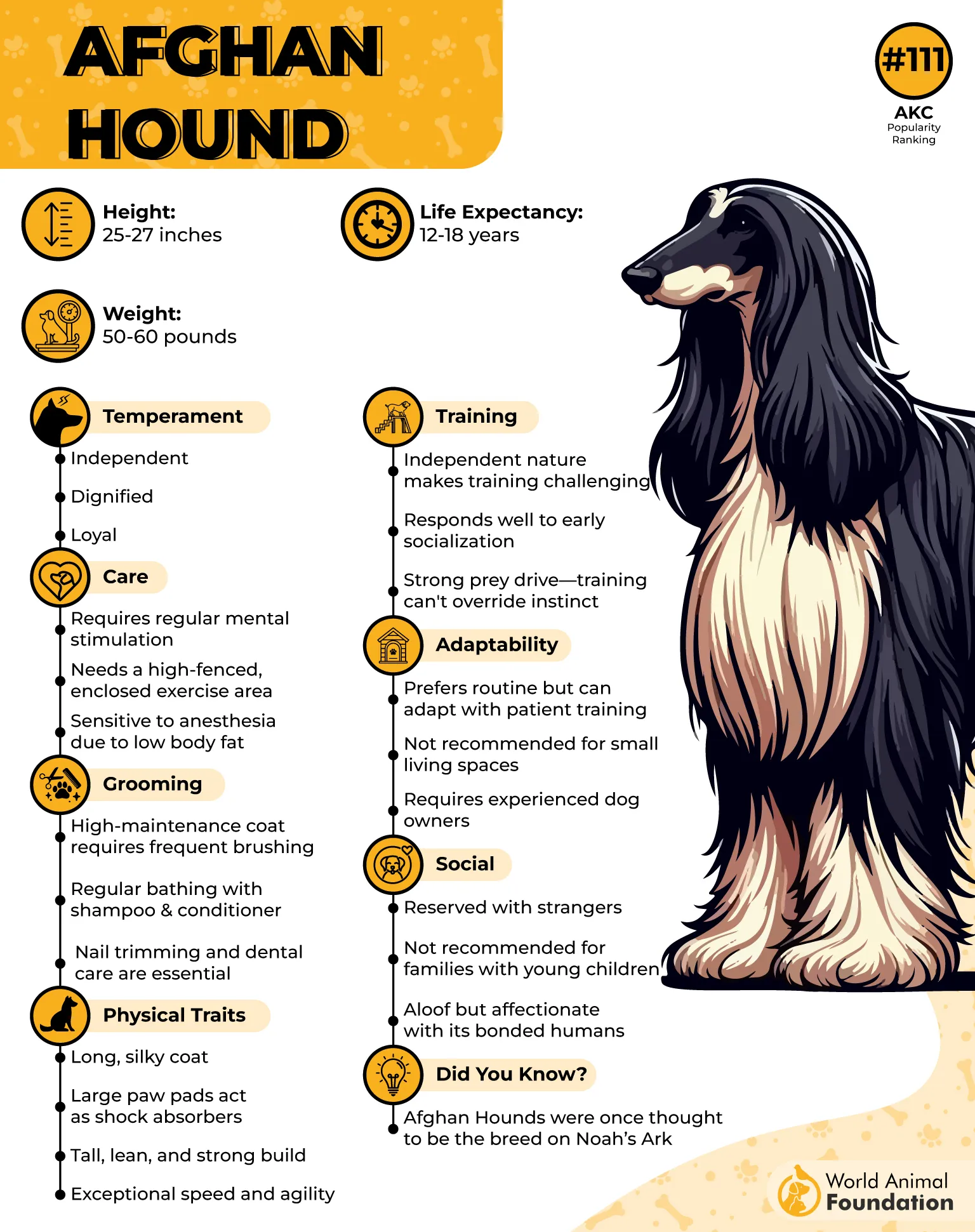
Naturally Balanced Movement
Their effortless, flowing gait is mechanically efficient. These physical traits reduce fatigue even in high-temperature terrains and minimize joint strain. Such natural movement is part of why they were once used for extended chases on rough ground.
A Widely Known Characteristic
The Afghan Hound is one of the few dog breeds with a vertebral structure that supports a “ring curl” tail — a trait maintained without selective exaggeration. This feature, paired with their flexible spine, gives them a spring-like agility uncommon in many breeds.
5. Chinese Crested

The hairless variety of the Chinese Crested allows for efficient body temperature regulation. With exposed skin and sparse hair, the breed naturally manages heat dissipation in warmer climates. This makes them particularly comfortable during long, hot days indoors or outside in shaded spaces.
Lightweight and Easy to Handle
Their small frame and manageable energy levels make obedience training much easier than with more assertive breeds. They typically stay close to their humans and respond quickly to vocal cues and routines. These traits suit first-time owners seeking a climate-adaptable companion.
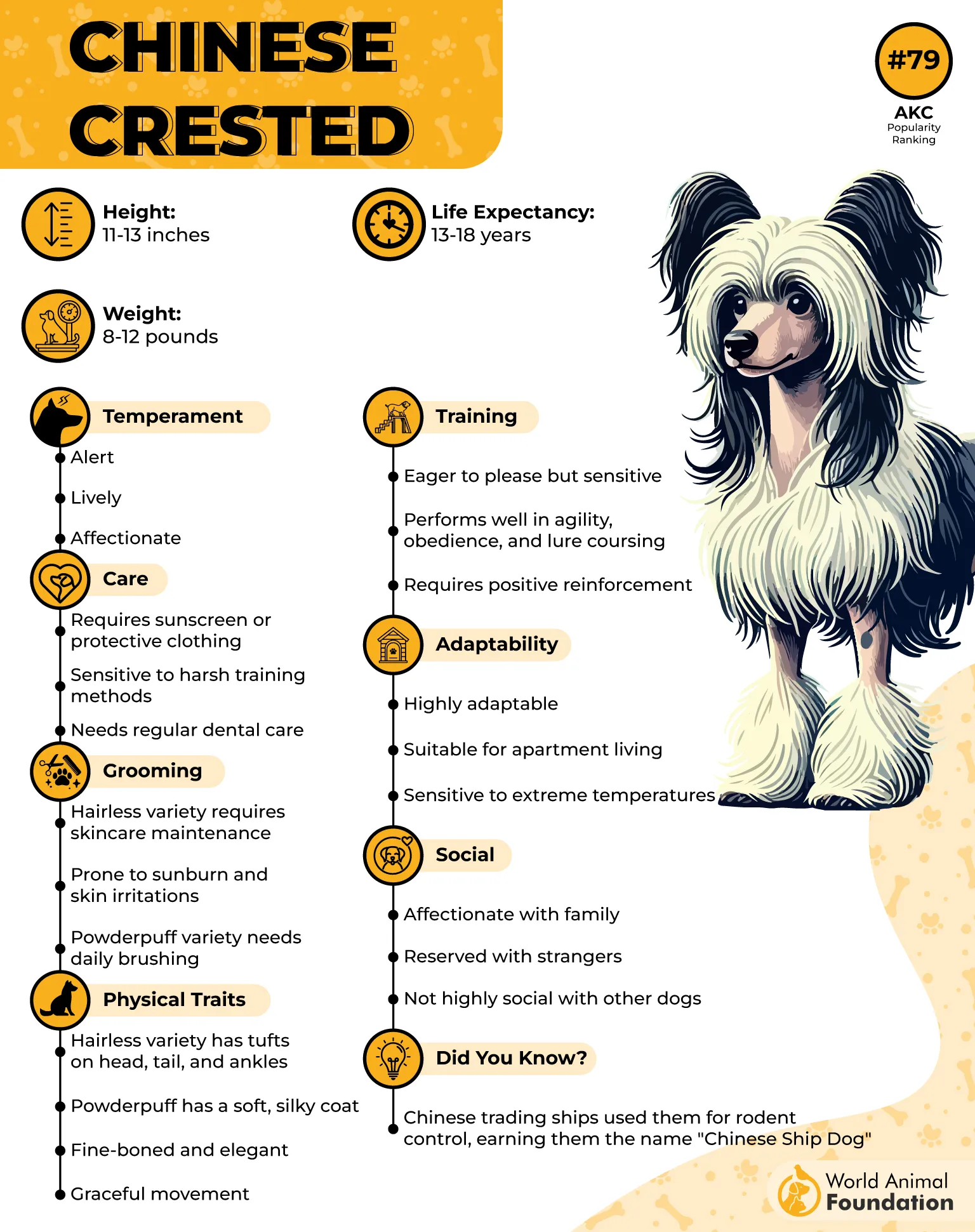
Emotionally Tuned and Attentive
The Chinese Crested is known for its high sensitivity to human emotions and environments. This awareness makes them more attuned to direction, positive reinforcement, and indoor manners. They enjoy close contact, often sticking to routines without needing forceful correction.
An Interesting Trait in the Hairless Variety
The breed often has a pattern of soft fur concentrated only on its head, feet, and tail, known as the “Powderpuff” placement. This distinct feature is rooted in their genetic makeup and doesn’t interfere with their adaptability during hot days.
6. American Hairless Terrier
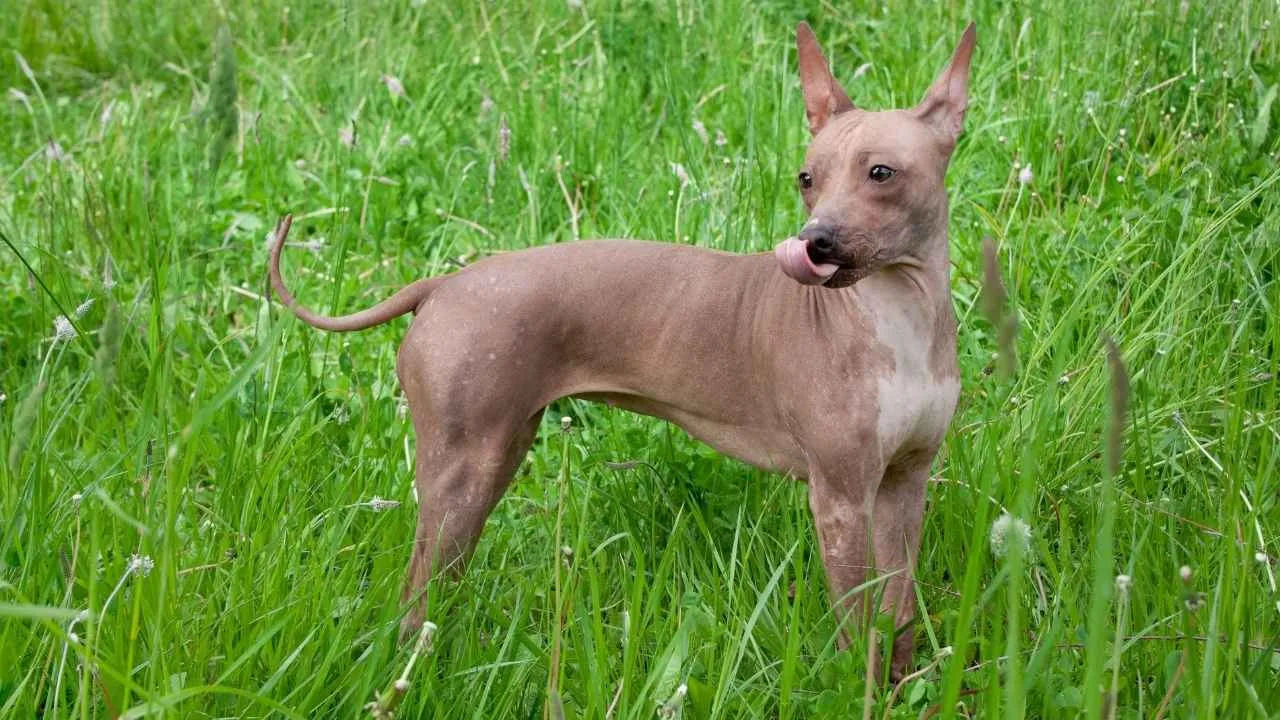
Their hairless skin allows for easy heat dissipation, making them comfortable in warm, humid regions. With no undercoat, they avoid the risk of heat being trapped close to the body. Light sunscreen or protective wear is advised for prolonged sun exposure outdoors.
Light Frame and Indoor Adaptability
This terrier has a compact, lightweight frame that adjusts easily to temperature-regulated homes and shaded outdoor spaces. They are also known for their quick reactions and clean movements. Their build naturally supports activity in warm climates without overheating concerns.
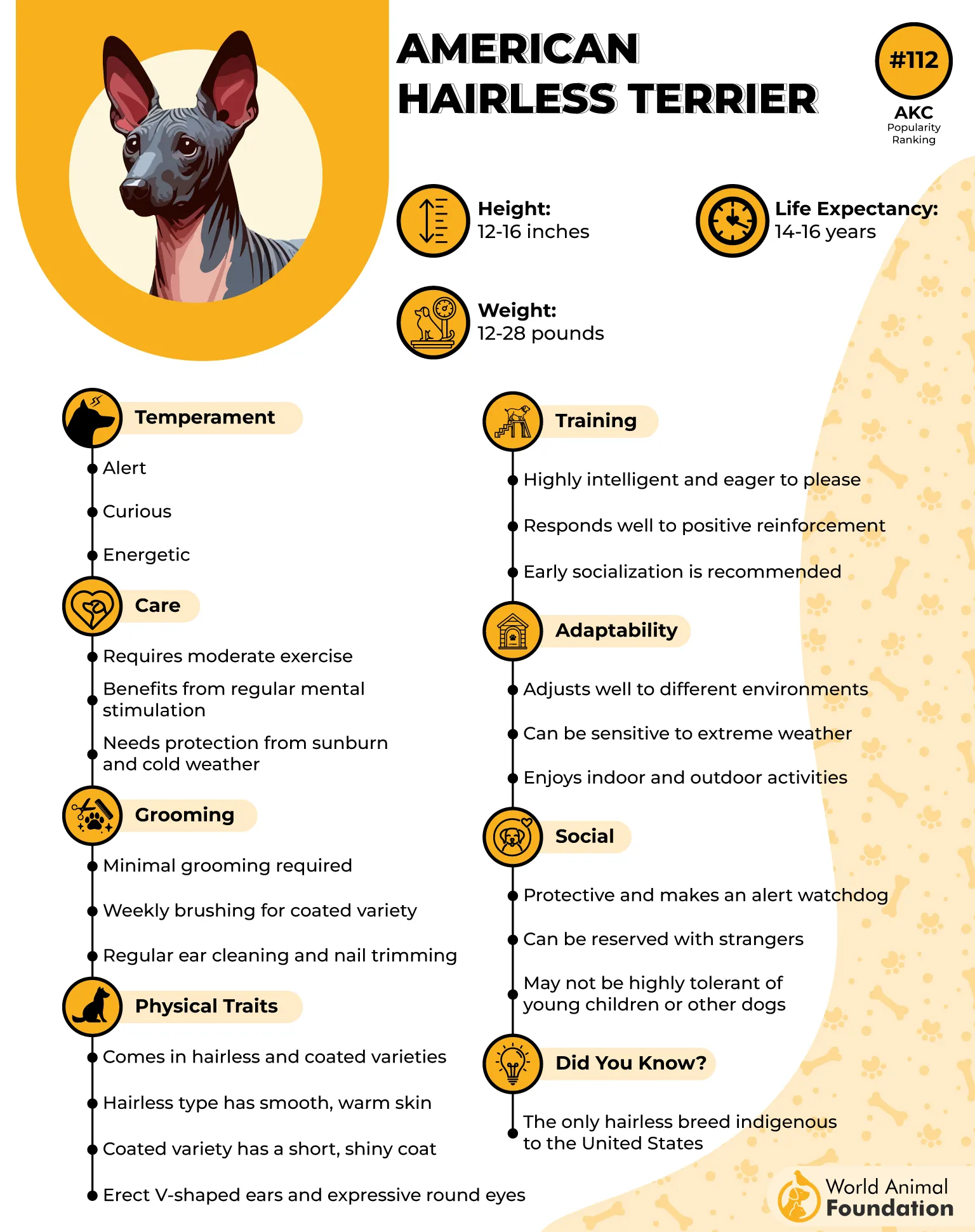
Responsive and Willing to Learn
This breed bonds strongly with its handlers and responds quickly to reward-based training methods. Their alert nature helps them catch on to new routines, especially when kept consistent. Because of their attentiveness, they often do well in indoor agility exercises and obedience tasks.
Recognized for Their Unique Coat Trait
According to the AKC, they’re widely recognized as the first hairless breed to have originated in the United States through natural mutation. This trait wasn’t artificially induced, which contributes to their stable health profile and manageable grooming needs in everyday life.
7. Whippet
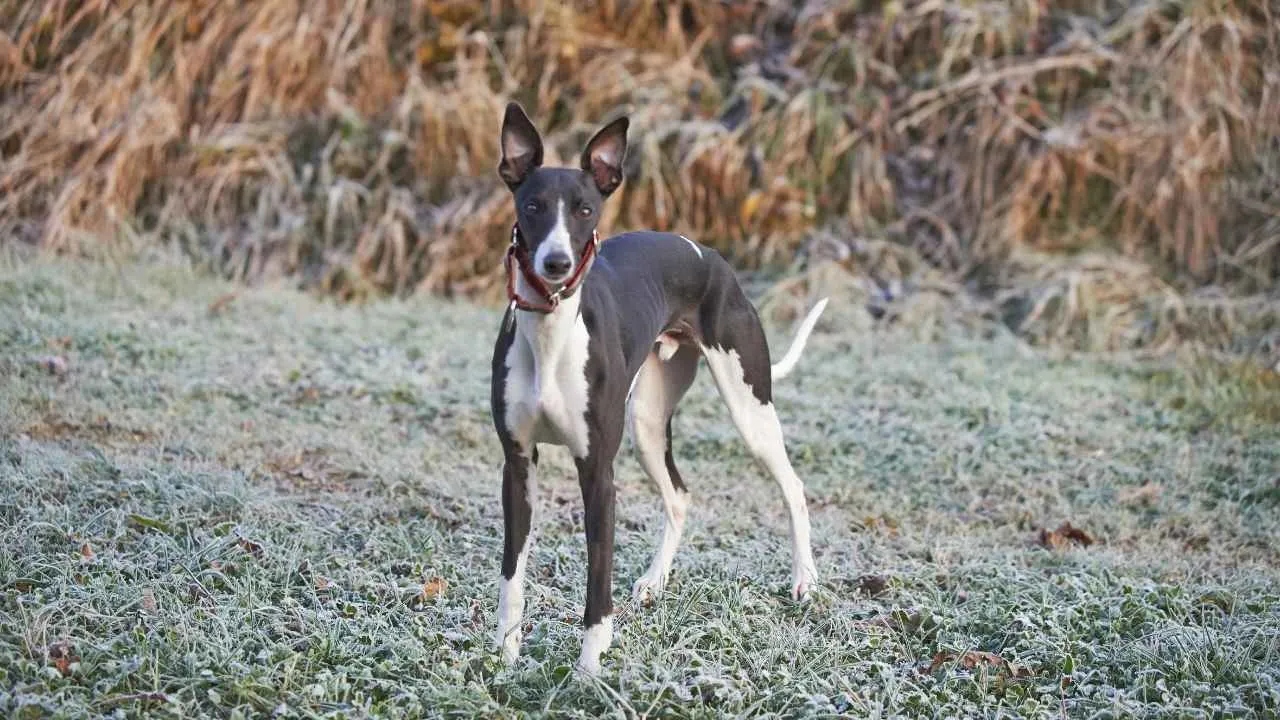
The Whippet’s sleek frame and fine coat naturally suit warmer regions with minimal overheating risks. They lack the heavy undercoat found in many northern dogs, helping with fast body cooling. Their resting posture and short naps also reduce heat production during inactivity.
Quick Learner with a Soft Temperament
Whippets are known for responding well to gentle correction and consistent cues. Their people-pleasing streak supports early obedience and crate training without stubborn phases. Even novice handlers often report success when routines are introduced calmly and early.
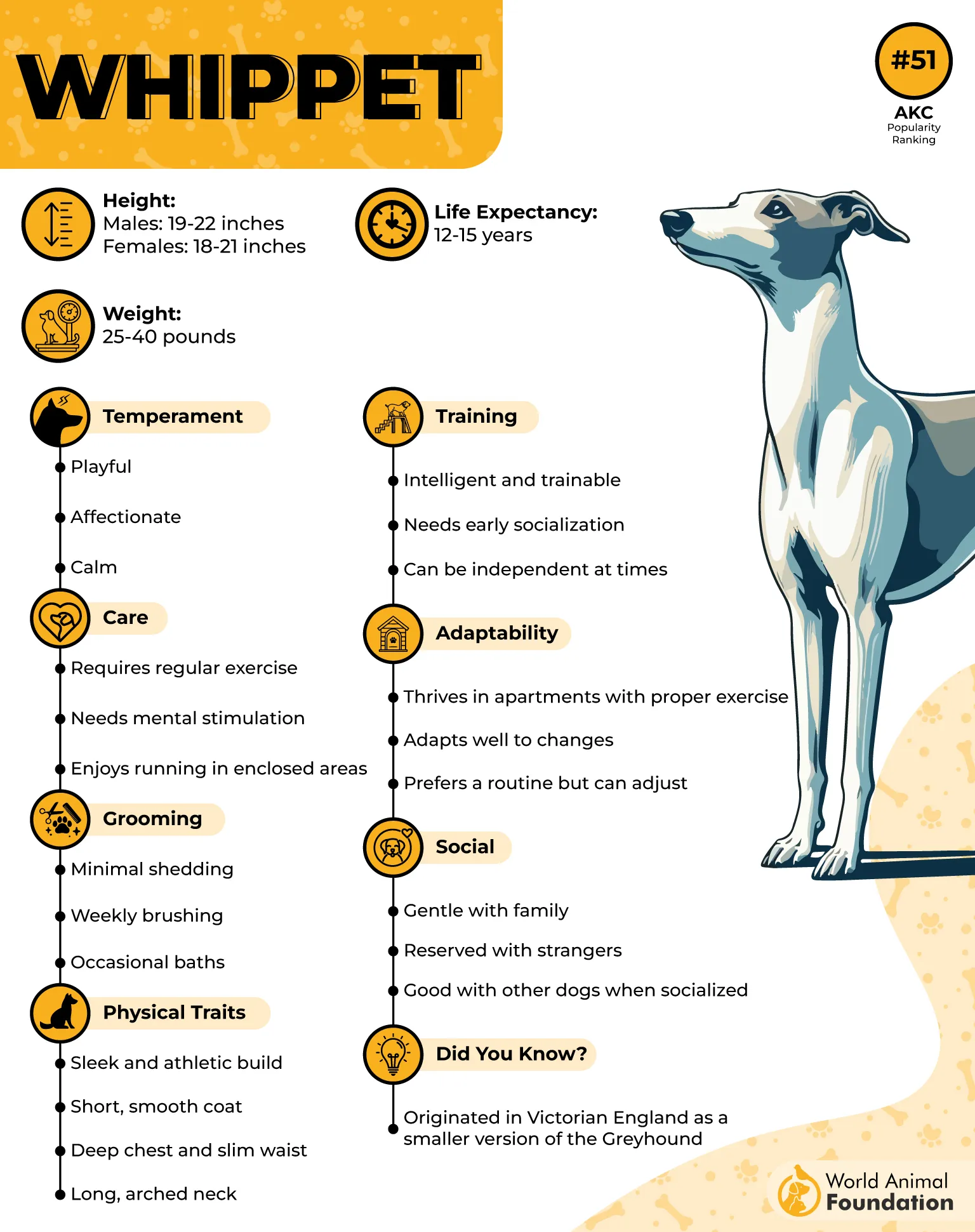
Low-Effort Maintenance Supports Routine
Because of their coat and laid-back energy at home, Whippets don’t require time-intensive grooming or prep before training. Their short bursts of focus fit well into quick training blocks. This makes them ideal for homes with hot weather and minimal indoor cooling.
Recognized for Their Unusual Speed
Whippets can reach speeds over 35 mph, making them one of the fastest domestic dog breeds, second only to Greyhounds. Their high acceleration and lean form were adapted for racing and lure coursing, which also translates to strong sprint-based recall skills.
Conclusion
When it comes to hot weather climates, not all dogs are created equal. Some breeds trap heat, tire quickly, or require conditions closer to cold weather to stay comfortable.
But the breeds we’ve explored today combine responsiveness with natural heat tolerance. These dogs don’t just stay cool—they stay focused. Many of them need ample exercise to stay sharp, but their calm temperament indoors makes them easy companions.
Whether you’re looking for excellent family pets or simply a dog that won’t overheat after ten minutes outside, these breeds strike the right balance. Their affectionate nature, light coats, and in some cases, very little body fat, help them thrive where others struggle.


